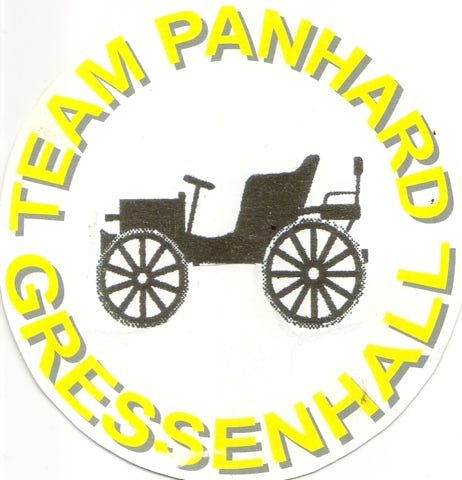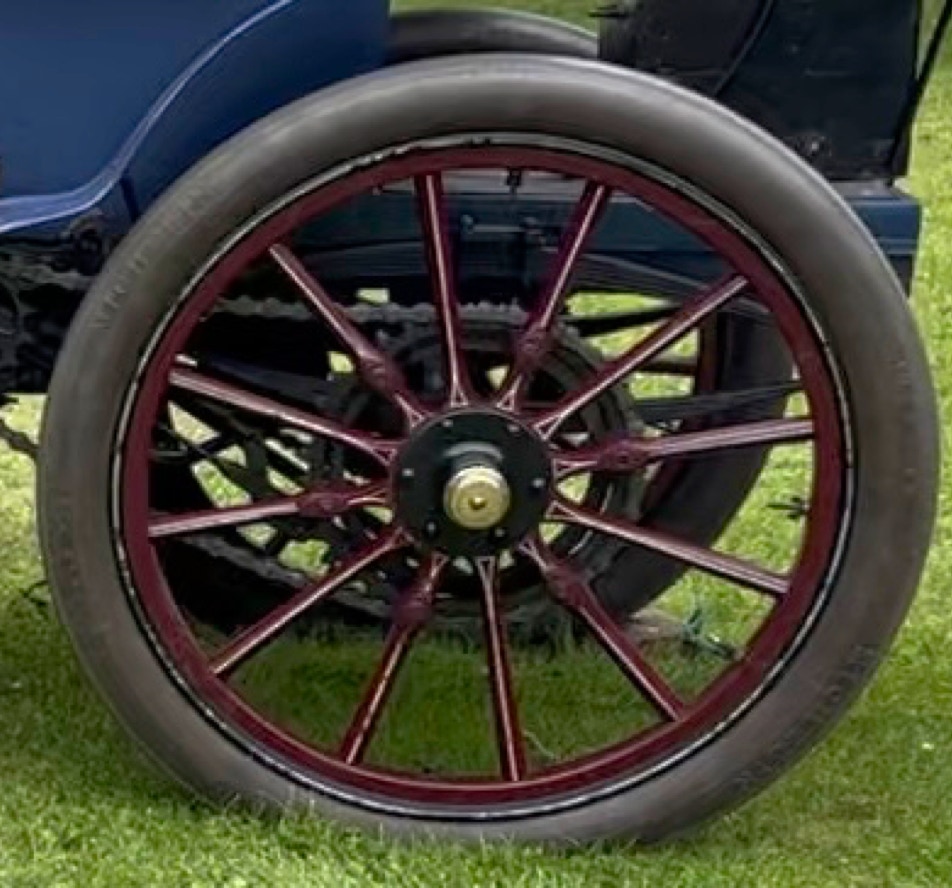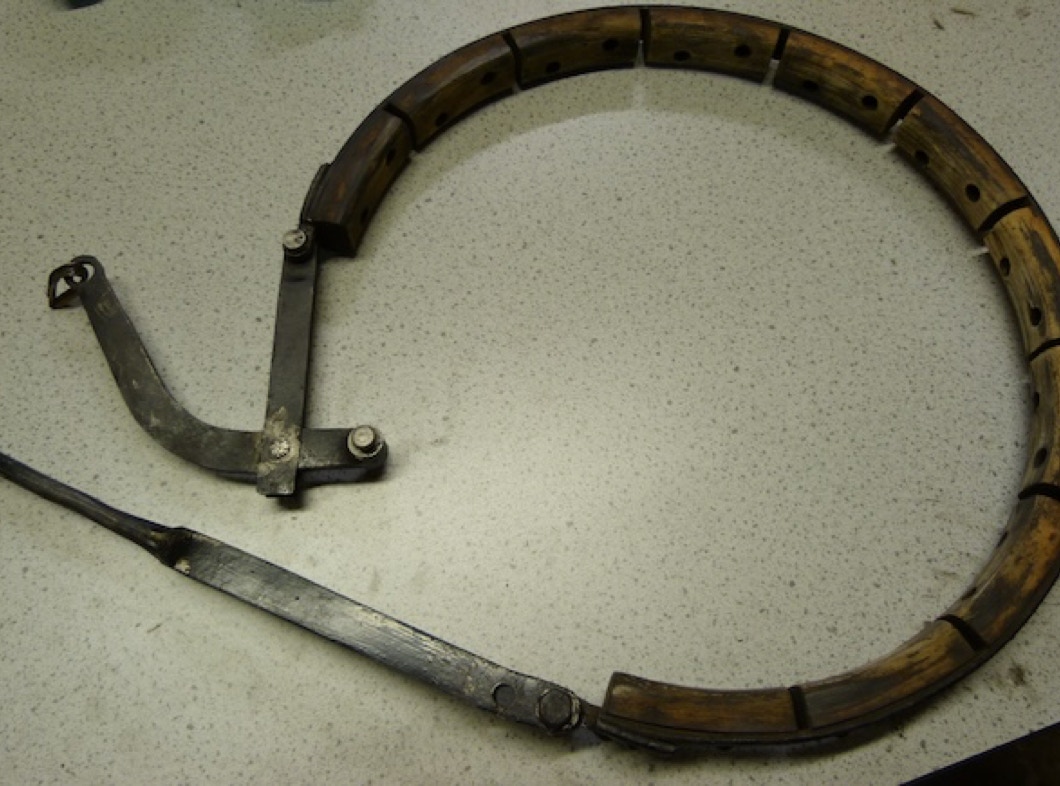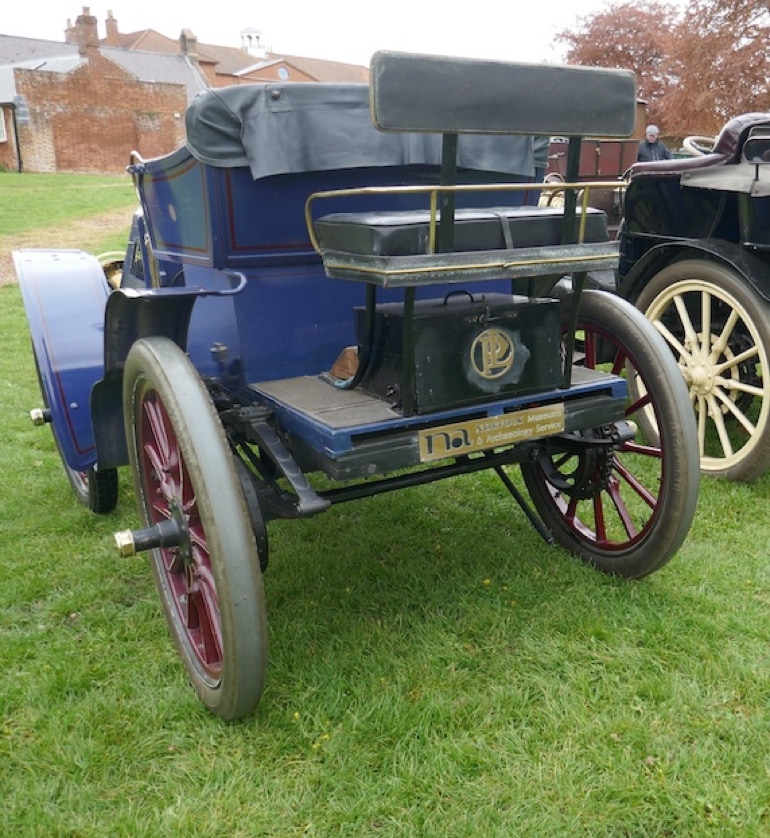
Wheels, brakes and steering



Wheels
The wheels are wooden ‘artillery’ wheels with pneumatic beaded-edge tyres and tubes. By modern standards the pressures are high – 60psi front and 80psi rear. In the event of a puncture, the repair would need to happen at the roadside, as there are no spare wheels, nor are the wheels designed for easy removal. The use of bigger wheels at the rear may have been a carry-over from horse drawn carriages when such an arrangement was commonplace. Nowadays that size of rear tyre is not available, so we will have difficulties if we need to replace them.

Wooden-spoked artillery wheel
Brakes
There are two independent braking systems fitted to the car. The footbrake operates brake shoes pressing on the outer surface of a drum attached to one of the output shafts from the differential. The efficiency of this brake is compromised by the presence of oil from the gearbox shaft which gets onto the drum surface.
There is also a large hand lever which operates brakes on narrow drums attached to the rear wheels. Wooden blocks are fixed to bands of steel which wrap round the drums and are pulled tight by the action of the brake lever. Balancing of the brake force between the wheels is catered for by a cable connecting the two sides, with the actuation onto this cable arranged so the cable can find its own position. Whilst this system is effective in stopping the car when going forward, it is not designed to stop rearward motion and, if applied when the car is rolling backwards, can cause the linkage to wind itself to destruction!
Both brake controls also disengage the clutch when applied. This ensures that the engine doesn’t try and force the car forwards under the action of the governor.
A sprag is fitted under the car and was intended to stop the car from rolling backwards on slopes. It may have been effective on gravel roads, but is of no use on tarmac surfaces.

Rear brake band showing wooden blocks

Sprag brake visible by rear right-hand wheel
Steering
This car is one of the earliest to use a steering wheel – previously control would have been by a tiller. The steering is by a worm and sector steering box, with a drop arm from the box connecting to a drag link that connects to the right-hand upright. A transverse track rod links the two uprights together. As the uprights are pivoting on a solid axle all rotation is in one plane, meaning the transverse track rod just has forked ends and fitted bolts, whereas the drag link has spherical bearings at each end to allow for suspension movement. Considerable effort was spent some years ago by the team in trying to cure wheel wobble at speed. Experiments were tried with changing camber angle, and fitting a steering damper, but with limited effect. It transpired the fault was a distortion in one of the front tyres.
Page updated
Copyright Team Panhard
2024